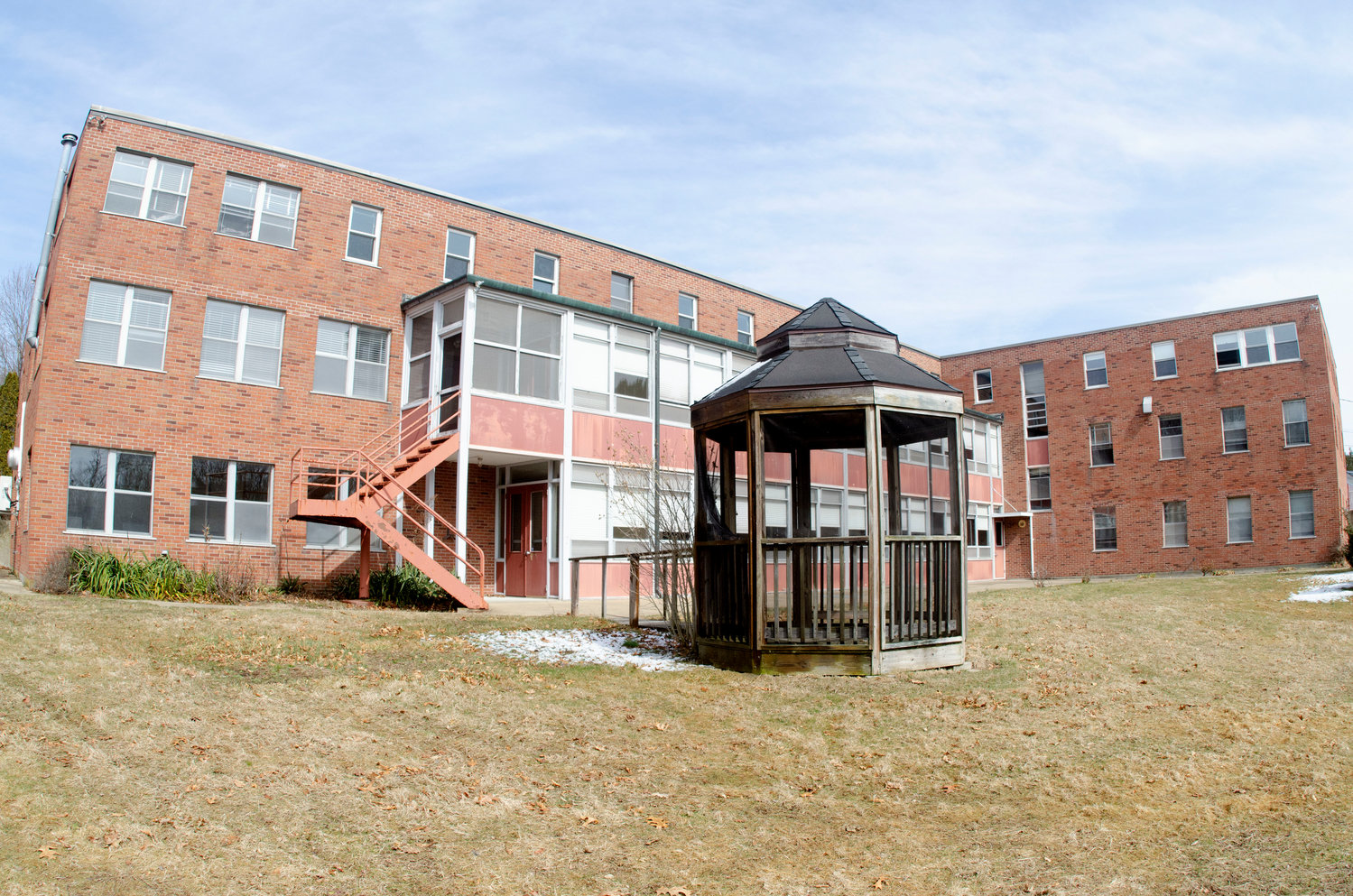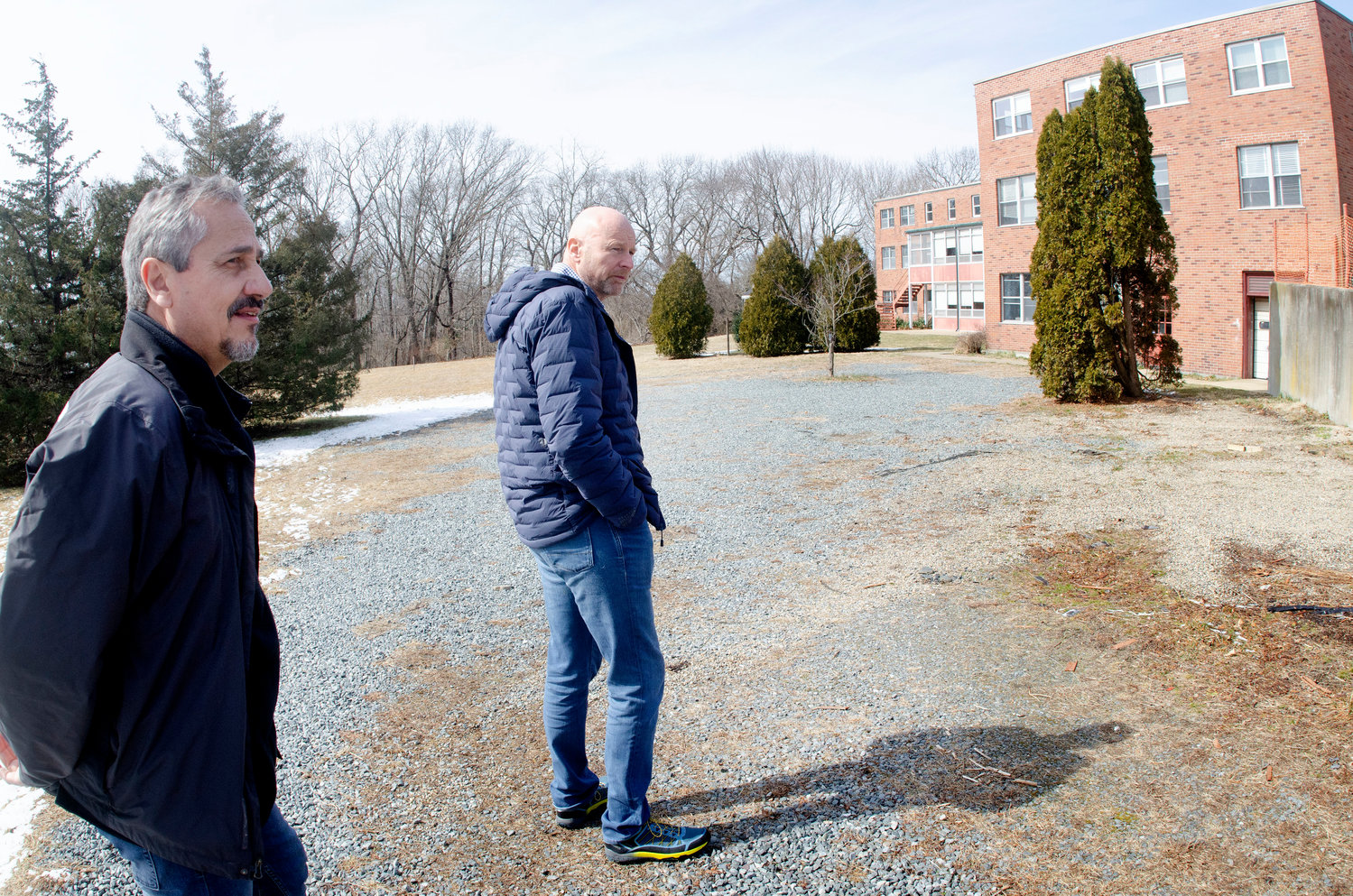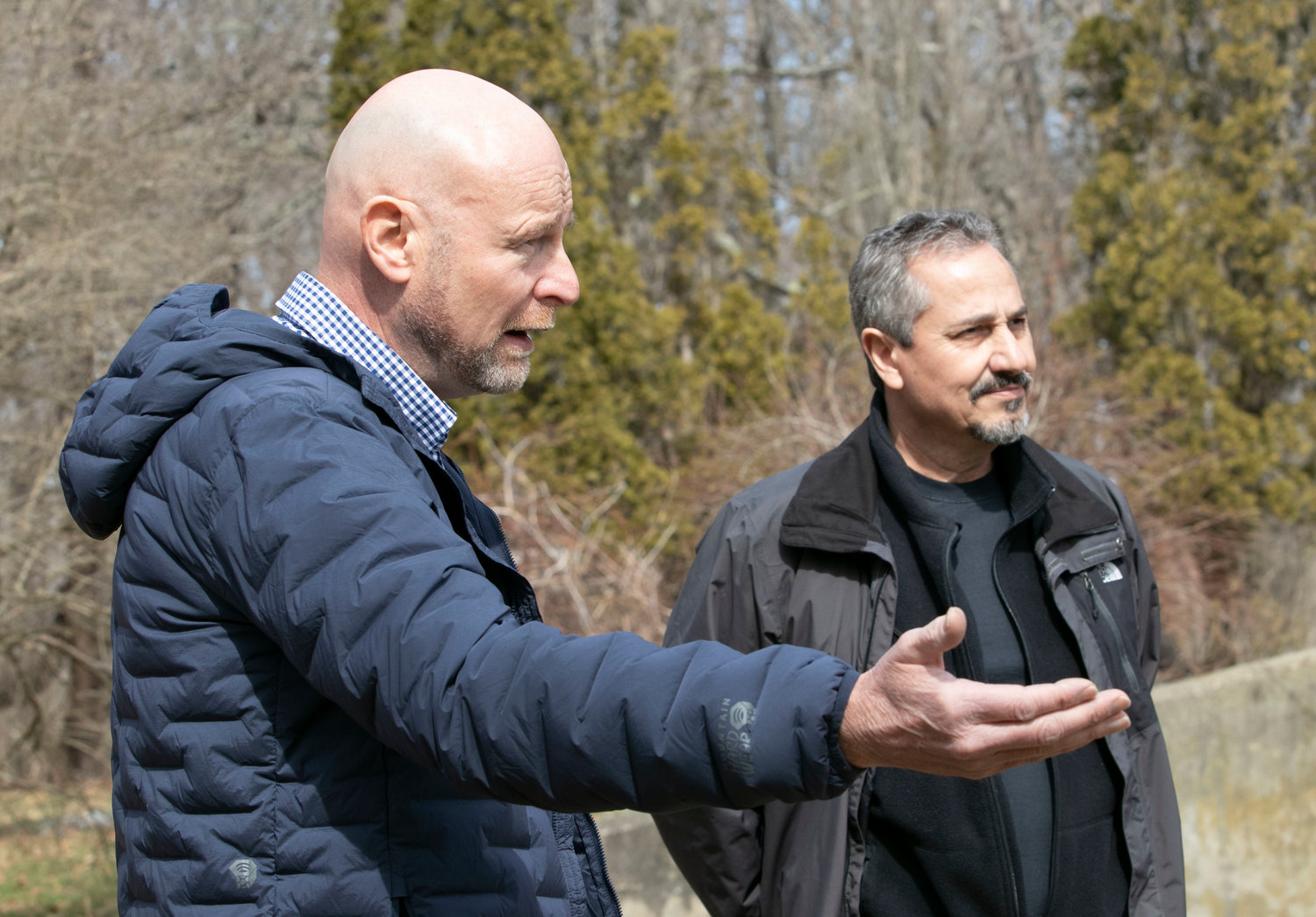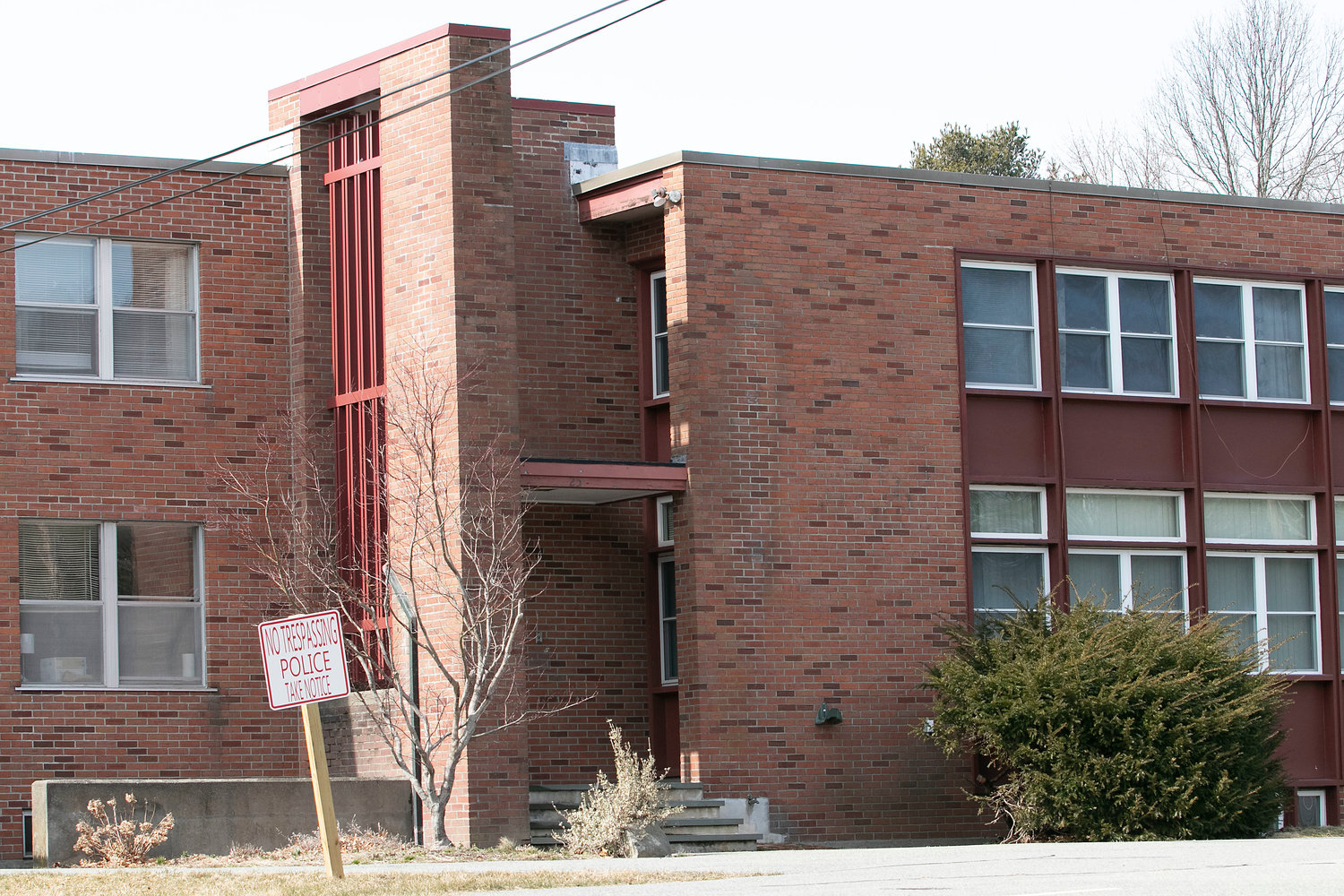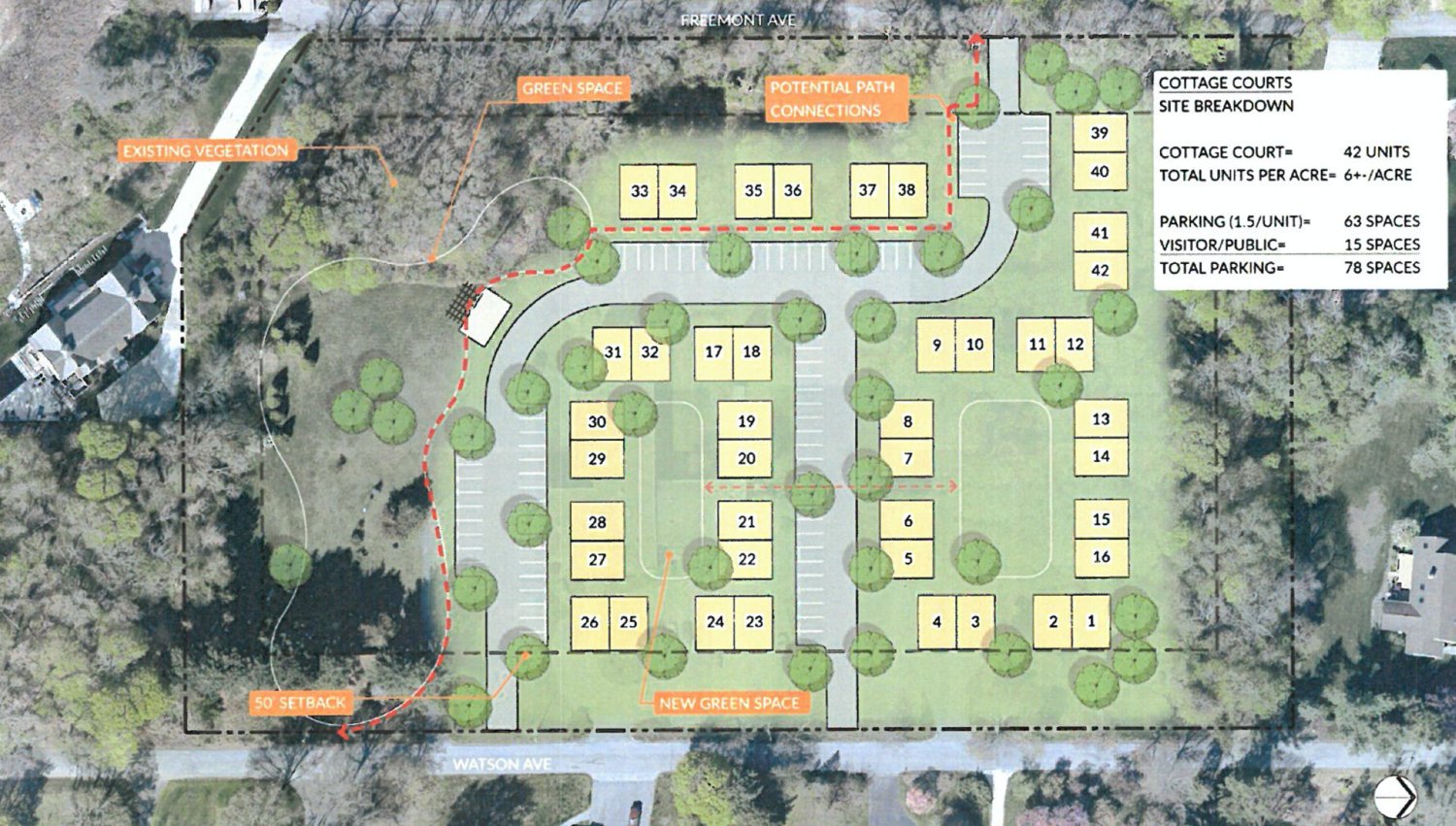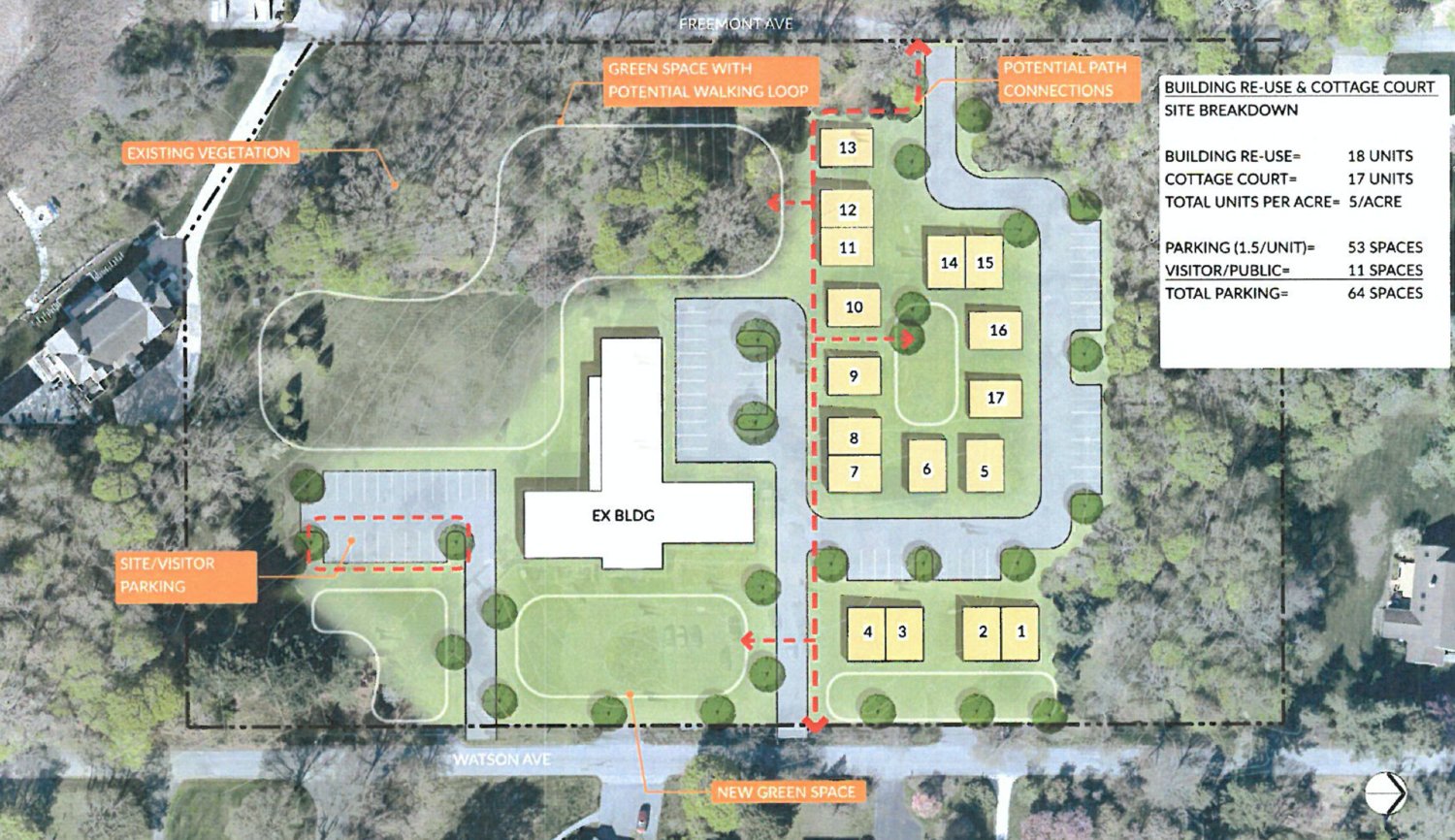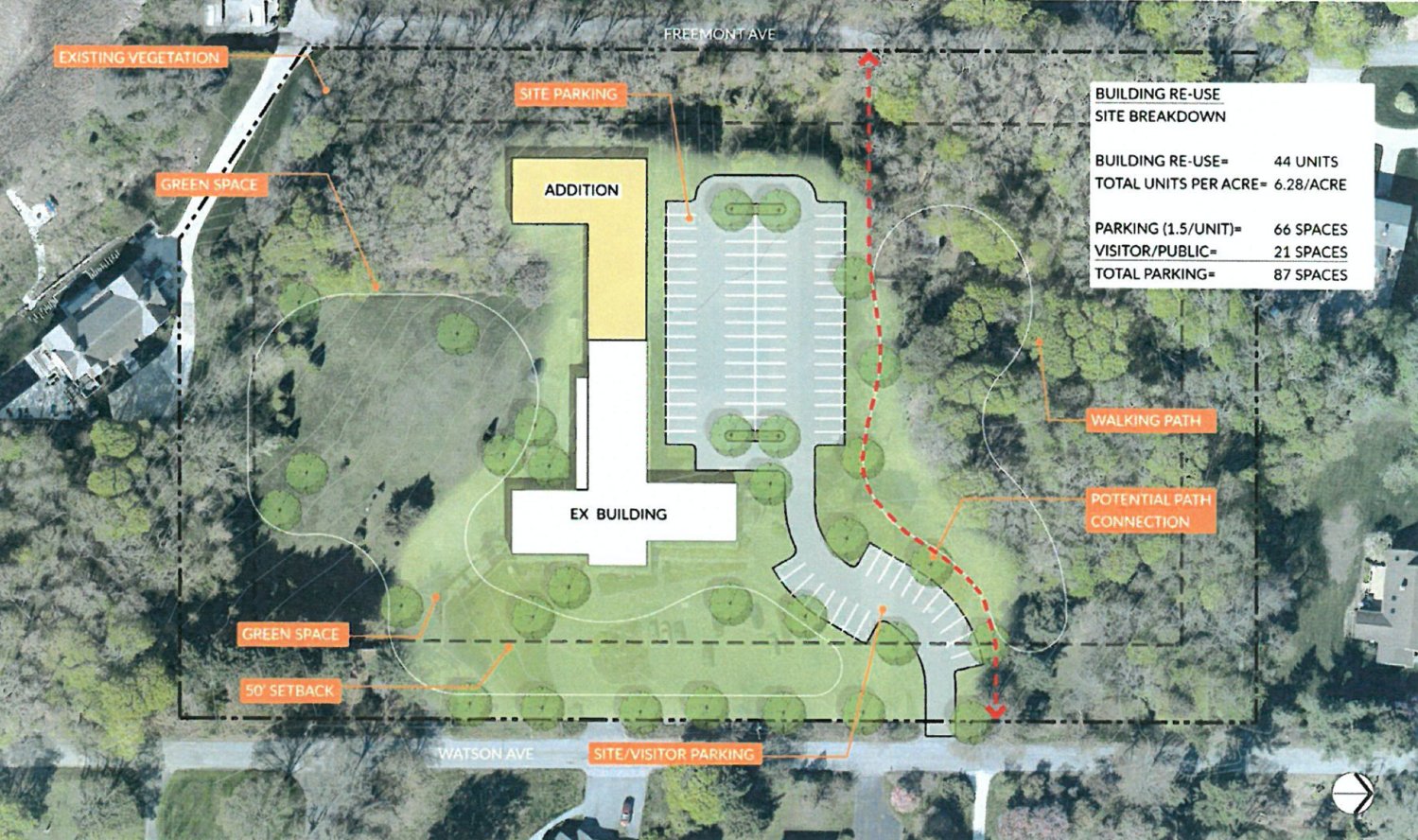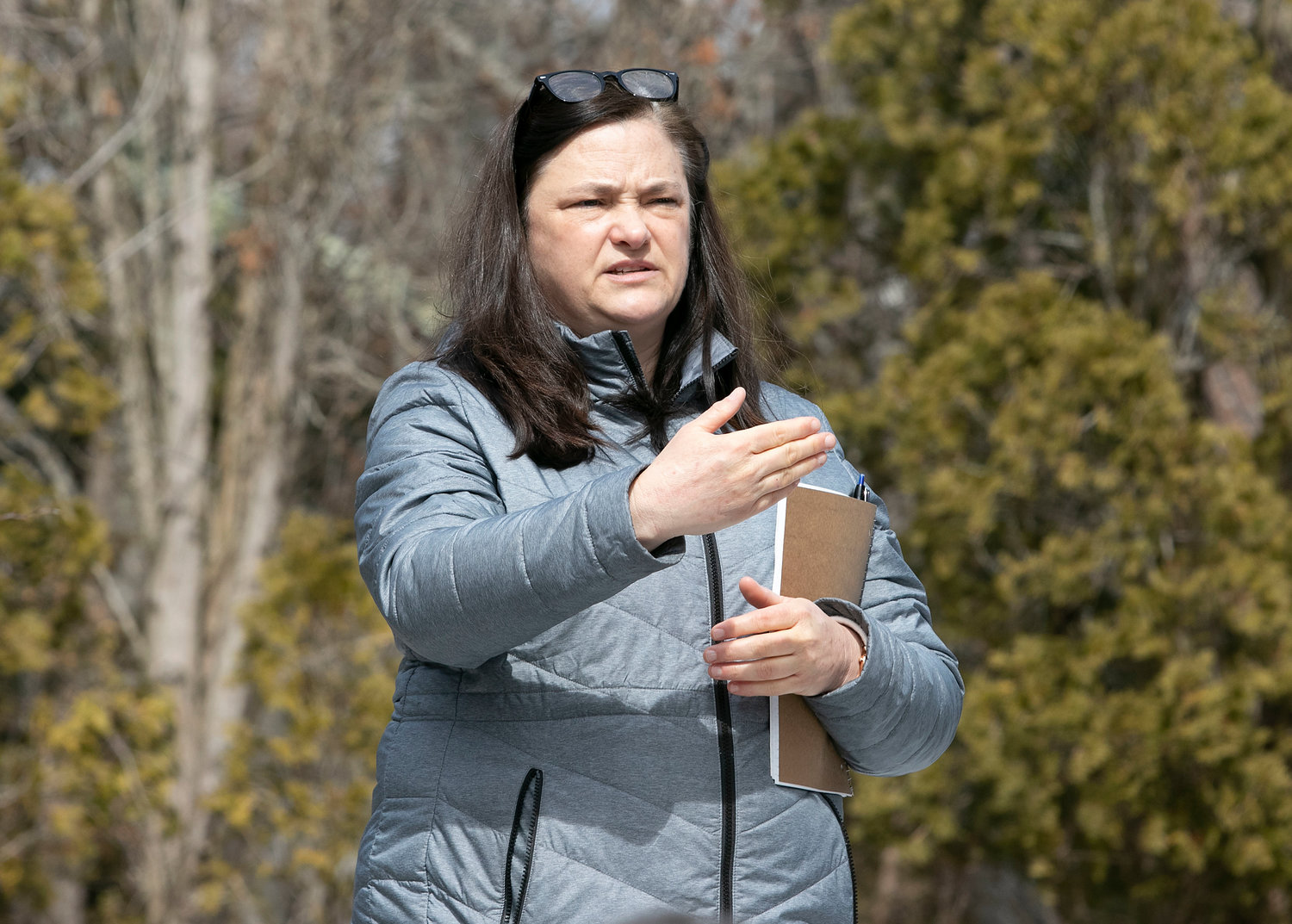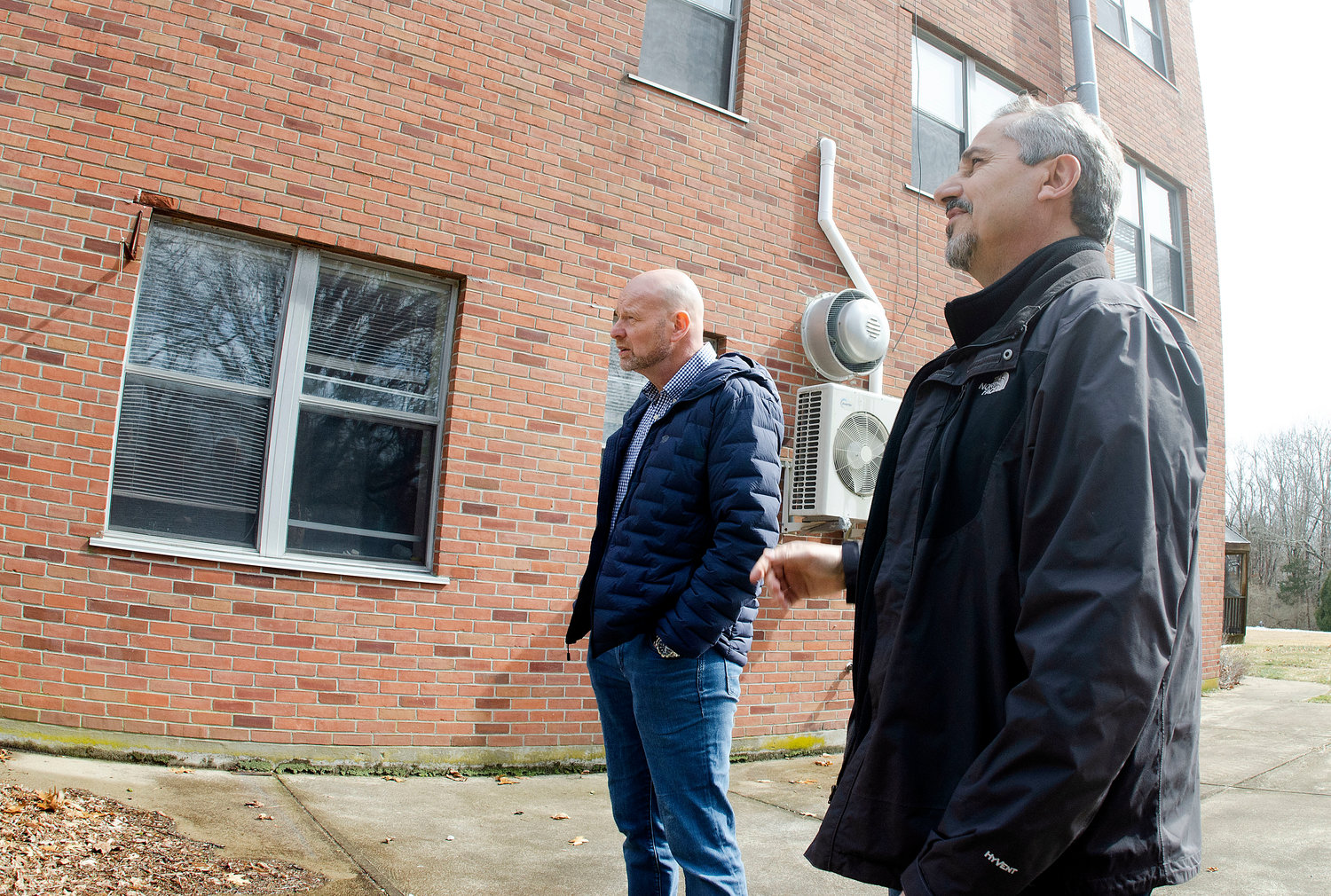What’s next for the monastery property in Barrington?
Committee hones in on design proposals; next meeting is March 28
What would you do with the former Carmelite Monastery property on Watson Avenue?
Would you cut down most of the trees and knock down the old brick monastery building and fill the land with dozens …
This item is available in full to subscribers.
Please log in to continue |
Register to post eventsIf you'd like to post an event to our calendar, you can create a free account by clicking here. Note that free accounts do not have access to our subscriber-only content. |
Day pass subscribers
Are you a day pass subscriber who needs to log in? Click here to continue.
What’s next for the monastery property in Barrington?
Committee hones in on design proposals; next meeting is March 28
What would you do with the former Carmelite Monastery property on Watson Avenue?
Would you cut down most of the trees and knock down the old brick monastery building and fill the land with dozens of affordable housing units?
Would you demolish the building and create a seven-acre nature preserve for the town’s residents and wildlife?
Would you transform the monastery into age-restricted senior housing?
All those options and plenty more are still on the table as members of the town’s 25 Watson Ave. Ad Hoc Committee continue to work toward a recommendation for the future use of the town-owned property.
The group, which has been meeting for months and discussing development options, was formed shortly after the town purchased the property which had been home to the Carmelite nuns since 1957.
The most recent phase of the committee’s work has been called the “design funnel” and will continue with an in-person meeting on March 28 at the middle school’s presentation room.
At the Feb. 28 meeting, members of the committee spoke about their design preferences. Some, including Dave Butera, called for the re-use of the existing building and preservation of the surrounding open space. Mr. Butera, who is a neighbor to the property, said that his approach would benefit older Barrington residents who want to downsize from their current homes and still remain in town. He said it would also provide open space for all the town’s residents to enjoy.
Other committee members, including Carla DeStefano and Roni Phipps, are calling for more housing units to be built on the property. Ms. Phipps and Ms. DeStefano are members of the town’s housing board of trustees. In fact, four members of the housing board sit on the 25 Watson Avenue committee.
Ironing out a design recommendation has involved discussing a variety of topics, including the potential layout of housing units, style of housing units, parking lot layouts, set-backs, use of open space, impact on the surrounding neighborhood, and financial feasibility of the future project.
During the Feb. 28 meeting, Mr. Butera suggested the town slow down the development process. Fellow committee member Mary Grenier agreed, stating that the process seemed to be rushed. She questioned why officials were pressing forward so quickly when the construction and development market were experiencing some of the greatest volatility seen in years: The price of materials and labor are high, she said, and the market is unstable.
“I feel like this whole thing is so rushed,” Ms. Grenier said.
Thomas Peck, also a member of the 25 Watson Ave. Ad Hoc Committee, said better insight into construction costs could lead to better creativity with the project. He suggested that the town, while not in the business of stockpiling land purchases, might be better served in this case to slow down the development process.
Barrington Director of Planning and Resiliency Teresa Crean acknowledged the comments and said she would reach out to Barrington Town Manager Phil Hervey to see what was driving the pace of the development process.
Barrington purchased the property for about $3.2 million after taxpayers at last year’s financial town meeting approved the expenditure by a single vote — 176 to 175. The town has since surveyed the property and assessed the condition of the former monastery. It is not clear if there are any deadlines placed on the development of the land. The town has not been collecting any tax revenue from the property as it had been previously owned by the Diocese of Providence.
The town hired some consultants to help with the development process — 4Ward Planning, which is based in Philadelphia, Pa., and Signal Works Architecture. Todd Poole of 4Ward Planning said the increasing cost of construction may abate but would not go back to where it once was. He said that if the project does not get developed in the near term it will cost more in the future.
Mr. Butera challenged Mr. Poole’s comments.
“I am a builder and I’ve built all my life. Materials are incredibly high,” he said. “I’ve spoken with owners of lumber yards. These prices are not staying where they are. They’re going to be going in the other direction. That is a fact. As the supply chain starts to bring in materials there’s going to be competition. Prices are going to go down.”
Mr. Butera and Mr. Poole also differed on whether renovation of the existing building is more costly than new construction.
Development safeguards?
Questions and comments at the Feb. 28 meeting covered a wide range of topics.
Ms. Grenier asked if the consultants would be conducting the traffic study, and also questioned if there had been any studies relating to the impact on property values of surrounding homes following the creation of housing developments.
Mr. Poole said it was rare that a development would have a negative impact on nearby property values.
Mr. Butera asked if there were any safeguards ensuring that the design recommendation put forth by the town is clearly followed by the developer — officials have said that the town is looking to sell the property to a developer. Mr. Butera asked if there was anything stopping a builder from purchasing the land and then pursuing a different development plan.
Mr. Poole said the developer and the town would sign an agreement or covenant that states the developer would agree to terms set forth by the town. Jordan Durham, a member of the committee who works in property development, said the sale of the property isn’t finalized until the developer submits plans for the work.
Ms. Grenier asked if the town was legally capable of age-restricting any future development. Mr. Durham said up to 20 percent of the units in an age-restricted (55-plus) project could be filled by people who were not 55 or older.
Ms. Crean said residents had submitted dozens of comments regarding the design proposals. She said some called for lesser density housing, while no one requested traditional R25 or R40 developments.
Ms. DeStefano asked who would be writing the RFP (request for proposal) for the project. Mr. Poole said he would be assisting the town. She also offered advice to the Watson Avenue neighborhood: Whatever is going to be designed is going to be nice, she said. Ms. DeStefano also told her fellow committee members they need to be flexible about whether the monastery building stays or goes.
Other committee members later reminded everyone that the original resolution that was voted upon for the purchase of the property stated that the monastery building needed to be preserved.
‘Does it really have to be 40?’
Susan McCalmont questioned the possible use of the property as open space — “Is that even under consideration,” she asked. Ms. Crean said the option of leaving the property as open space was in response to residents’ comments.
Some people debated the financials. A more densely populated project would be more financially feasible for a developer, some said. Others countered, saying the town was willing to take a loss when selling the property to a developer if it meant a better plan for the land.
Ms. Phipps asked the consultants to provide some clarity on the cost to renovate the existing building versus not re-using it.
“That’s a huge question,” she said.
Committee member David Beal asked how many people would live in a 40-unit development, as Signal Works Architect Erik Army had earlier said that it appeared the 40-unit figure was moving toward a consensus. Mr. Poole then offered a response to Mr. Beal’s questions, indicating that about 60 people would live in a 40-unit development.
Some committee members showed less support for the 40-unit figure. Mr. Butera said the public voted to preserve the monastery.
“Does it really have to be 40?” Mr. Butera said. “Let’s just look at this building and save the existing space… it helps people who are in this community, and it also creates open space for the town to enjoy…”
Resident Elizabeth Grieser spoke during the public comment portion of the meeting. She said the monastery property was not Barrington’s solution to affordable housing. She disagreed with the idea that 40 units was an ideal number. She also told committee members that when this open space was gone, it was going to be gone for good, similar to the old Jones’s Rose Garden — a once-beautiful rose garden on Nayatt Road that was replaced with single family homes.
Ms. Grieser also requested the town use an independent agency to conduct the impact studies.
Debra Nyser also spoke. A resident of that neighborhood, she said it appeared that some people on the committee had their own agendas or special interests. She said she was very concerned about the density of the development.
“… I think to cram as many people into this piece of property, and that goes for any piece of property … this is a neighborhood, this is a suburban town, and we’re going to start becoming a city,” she said.
“This little piece of property is not going to solve the problems of the world. It’s just not. Let’s not mess it up for the people who live here.”
25 Watson Avenue site walk
The 25 Watson Ad-Hoc Committee will host a site walk of the grounds around the former Carmelite Monastery on Thursday, March 24, at 4 p.m. The site walk will include the grounds only, and will be managed as a meeting of the 25 Watson Ad-Hoc Committee, subject to Open Meetings Act requirements. The building will not be opened for interior tours during this site walk. Comments on the Design Phase of the process to date are being collected by the Town - the comment form, meeting recordings, slide presentations, and other materials can be found online at: https://www.barrington.ri.gov/watson-committee
Next meeting
The 25 Watson Avenue Ad Hoc Committee is scheduled to discuss the design possibilities of the property at a meeting later this month:
• When: Monday, March 28, 6:30-9:30 p.m.
• Where: Barrington Middle School presentation room

